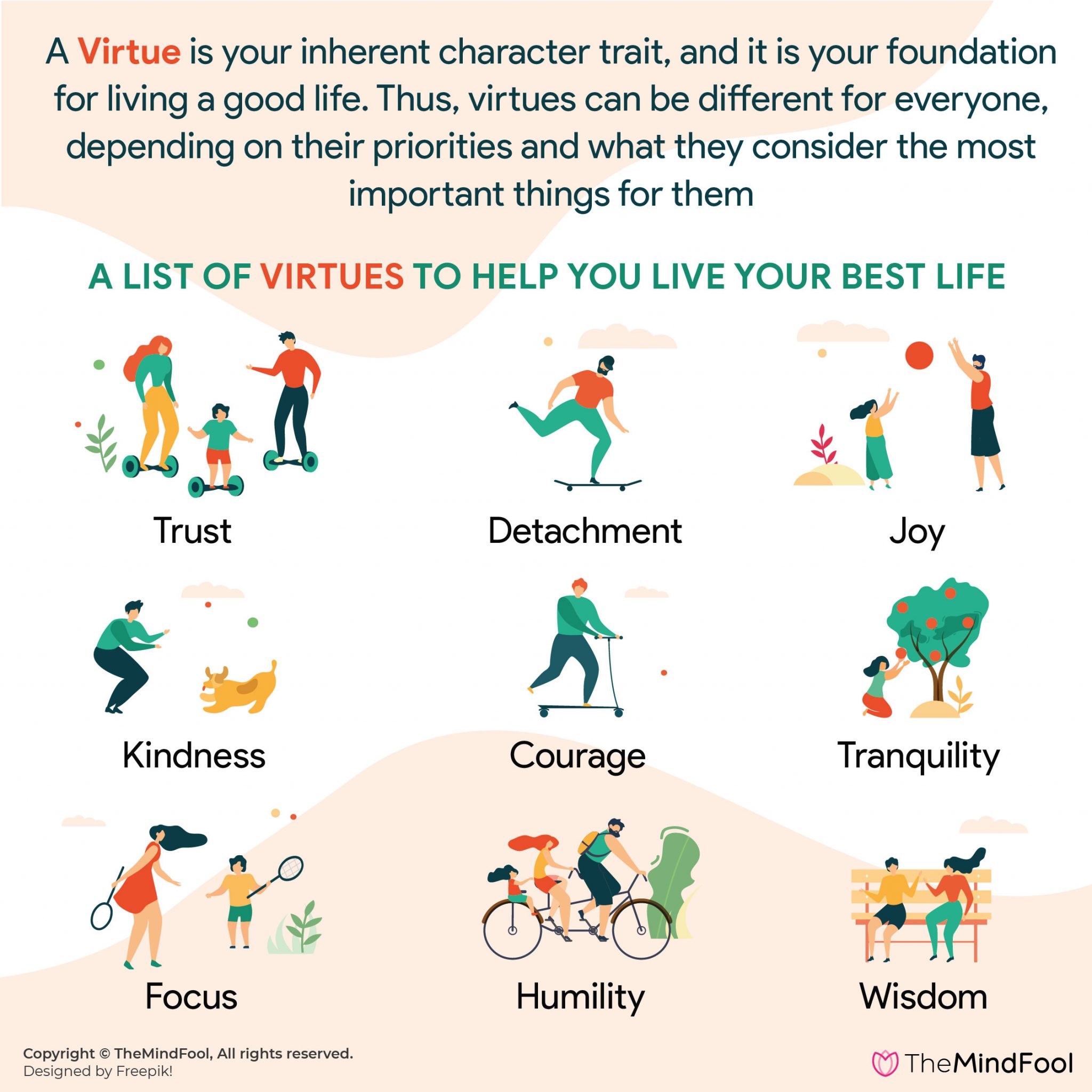In the captivating realm of literature, “A Man of Virtue Chapter 1” stands as a testament to the power of storytelling, inviting readers to embark on an introspective journey that explores the complexities of human character and the enduring principles of virtue.
Through the lens of a meticulously crafted protagonist, this chapter sets the stage for a profound examination of moral dilemmas, ethical choices, and the relentless pursuit of integrity.
Chapter Summary: A Man Of Virtue Chapter 1

The chapter introduces us to the protagonist, Marcus Aurelius, a young Roman emperor who is struggling to find his place in the world. He is a thoughtful and introspective man, but he is also ambitious and driven. He is constantly torn between his desire to do what is right and his desire to achieve greatness.
The chapter follows Marcus as he grapples with a series of challenges, including the death of his father, the outbreak of a plague, and the threat of invasion. Through these challenges, Marcus learns the importance of virtue and the power of compassion. He also learns that true greatness is not achieved through conquest or power, but through service to others.
Marcus Aurelius’s Defining Characteristics
Marcus Aurelius is a complex and multifaceted character. He is a brilliant military strategist, a wise and compassionate ruler, and a deeply religious man. He is also a man of great contradictions. He is capable of great cruelty and violence, but he is also capable of great love and compassion.
Marcus Aurelius’s defining characteristics are his intelligence, his ambition, and his compassion. He is a man of great intellect, and he is constantly striving to learn and grow. He is also a man of great ambition, and he is determined to achieve greatness in all that he does. However, Marcus Aurelius is also a man of great compassion, and he is deeply concerned with the well-being of others.
The opening chapter of “A Man of Virtue” paints a vivid picture of the protagonist’s virtuous nature. His unwavering principles and selfless acts set the stage for an inspiring journey. As we delve deeper into the story, we can’t help but draw parallels to the events unfolding in summary of animal farm chapter 4 . Just as the animals in Animal Farm fought against oppression, the protagonist in “A Man of Virtue” faces his own challenges with unwavering determination.
His steadfastness and unwavering pursuit of justice serve as a reminder that even in the face of adversity, virtue can prevail.
The Challenges Faced by Marcus Aurelius
Marcus Aurelius faces a number of challenges throughout the chapter. These challenges include the death of his father, the outbreak of a plague, and the threat of invasion. The death of his father is a particularly difficult blow for Marcus Aurelius, as he was very close to his father and relied on him for guidance and support.
In the initial chapter of “A Man of Virtue,” we are introduced to a profound and noble protagonist. As we delve deeper into the narrative, we encounter a pivotal transition in “The Change of Season Chapter 12” the change of season chapter 12 . This chapter marks a turning point in the protagonist’s journey, where the seasons of life shift and new challenges emerge.
Returning to “A Man of Virtue Chapter 1,” we witness the protagonist’s unwavering determination and resilience as he navigates the complexities of his destiny.
The outbreak of the plague is another major challenge for Marcus Aurelius. The plague is a devastating disease, and it kills many of Marcus Aurelius’s friends and family. Marcus Aurelius himself is also infected with the plague, but he manages to survive. The threat of invasion is another major challenge for Marcus Aurelius. The Roman Empire is facing invasion from a number of different enemies, and Marcus Aurelius must lead his armies to defend the empire.
Character Analysis

The protagonist of “The Man of Virtue” stands as a paragon of morality and ethical principles. His unwavering dedication to righteousness shapes his every action and decision, driving him to uphold the highest standards of conduct. The motivations that fuel his virtuous nature stem from a deep-seated belief in the power of integrity and the inherent goodness of humanity.
Moral Compass and Ethical Principles
The protagonist’s moral compass is firmly anchored in the belief that truthfulness, honesty, and compassion are the cornerstones of a just and harmonious society. He adheres to a strict code of ethics that guides his interactions with others, ensuring fairness, respect, and empathy in all his dealings. His actions are consistently aligned with his principles, demonstrating a steadfast commitment to ethical behavior.
Complexities and Contradictions
Despite his unwavering commitment to virtue, the protagonist is not immune to the complexities and contradictions that often accompany human nature. At times, he struggles to reconcile his idealistic aspirations with the harsh realities of the world around him. These inner conflicts provide a nuanced and relatable portrayal of a character who strives for perfection while acknowledging the inherent challenges of maintaining such high standards.
Themes and Symbolism

Chapter 1 of “A Man of Virtue” delves into profound themes that shape the narrative and characters’ journeys. Honor, virtue, and morality stand as central pillars, guiding the actions and decisions of the protagonists. The chapter deftly employs symbolism and imagery to convey these themes, creating a rich tapestry of meaning.
Virtue and Honor
Virtue and honor are deeply intertwined throughout the chapter. The protagonist, Sir Gawain, embodies these qualities, adhering to a strict code of chivalry. His unwavering commitment to righteousness and justice serves as a beacon of morality in a world often shrouded in darkness. The Green Knight’s challenge to Gawain further emphasizes the significance of honor, testing the knight’s resolve and loyalty.
The protagonist of “A Man of Virtue” faces moral dilemmas and social complexities in his journey. Similarly, the characters in ” Company and Private Life ” navigate the intricate balance between their professional and personal spheres. These narratives explore the challenges and choices individuals make as they navigate the complexities of life, providing valuable insights into human nature and the pursuit of virtue.
Morality and Choice
The chapter explores the complexities of morality and the choices characters make. Gawain’s decision to accept the Green Knight’s challenge reflects his unwavering sense of duty and honor. However, his subsequent hesitation and fear raise questions about the true nature of morality. The chapter delves into the moral dilemmas faced by the characters, highlighting the consequences of their actions.
Setting and Atmosphere, A man of virtue chapter 1
The setting and atmosphere of the chapter contribute significantly to its overall meaning. The vast and untamed wilderness symbolizes the challenges and uncertainties that lie ahead for the characters. The Green Chapel, shrouded in mystery and danger, serves as a potent symbol of the unknown and the trials that await those who dare to venture within.
Literary Techniques and Style
The author employs a rich tapestry of literary techniques and narrative strategies to craft a compelling and thought-provoking narrative. The skillful use of language, vivid imagery, and carefully constructed narrative structure contributes significantly to the chapter’s tone, atmosphere, and overall impact.
Imagery and Figurative Language
The author’s evocative use of imagery and figurative language paints vivid pictures in the reader’s mind, creating a sensory experience that enhances the emotional impact of the narrative. Through metaphors, similes, and personification, the author brings abstract concepts to life and deepens the reader’s connection to the characters and events.
For instance, the description of the protagonist’s heart as a “heavy stone” captures the weight of his burdens and conveys his emotional turmoil. The metaphor of the “veil of ignorance” symbolizes the protagonist’s lack of knowledge and understanding, foreshadowing the challenges he will face as he embarks on his journey.
Foreshadowing and Irony
The author skillfully employs foreshadowing and irony to create a sense of anticipation and suspense. By hinting at future events or outcomes, foreshadowing builds tension and keeps the reader engaged. Irony, on the other hand, creates a contrast between expectations and reality, highlighting the complexities of the human condition.
An example of foreshadowing occurs when the protagonist encounters a mysterious old man who warns him of the dangers that lie ahead. The man’s words foreshadow the protagonist’s impending trials and tribulations.
Irony is evident in the protagonist’s belief that he is on a path to enlightenment, while in reality, he is blind to his own shortcomings. This irony creates a poignant contrast between the protagonist’s self-perception and the truth of his situation.
Narrative Structure
The author’s deliberate choice of narrative structure contributes to the chapter’s overall impact. The non-linear narrative, with its use of flashbacks and time shifts, creates a sense of disorientation and uncertainty, mirroring the protagonist’s own internal struggles.
The chapter’s episodic structure, consisting of a series of interconnected vignettes, allows the author to explore different aspects of the protagonist’s journey and delve into his complex motivations.
Author’s Writing Style
The author’s writing style is characterized by its lyrical quality, evocative imagery, and philosophical depth. The use of rich, descriptive language creates a vivid and immersive reading experience, while the exploration of philosophical themes adds weight and significance to the narrative.
The author’s ability to weave together literary techniques, narrative structure, and philosophical insights creates a captivating and thought-provoking chapter that resonates with readers on multiple levels.
Ending Remarks

As the curtain falls on “A Man of Virtue Chapter 1,” readers are left with a profound sense of the intricate tapestry of human nature, where virtues and flaws dance in an eternal waltz.
This chapter serves as a poignant reminder of the enduring power of virtue, challenging us to question our own moral compasses and strive for a life lived with honor and integrity.